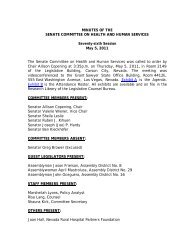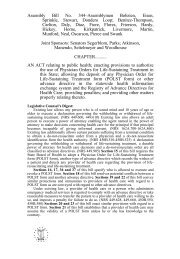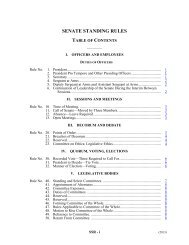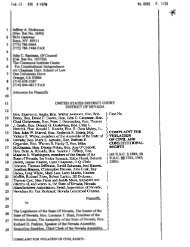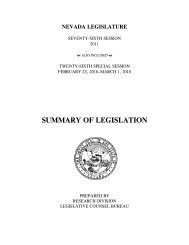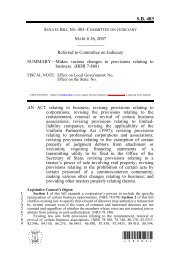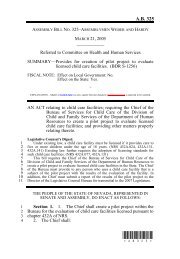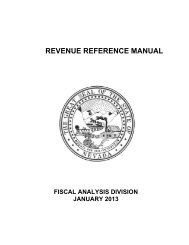Nevada Pre-Kindergarten Standards
Nevada Pre-Kindergarten Standards
Nevada Pre-Kindergarten Standards
Create successful ePaper yourself
Turn your PDF publications into a flip-book with our unique Google optimized e-Paper software.
REFERENCES<br />
<strong>Pre</strong>-<strong>Kindergarten</strong> <strong>Standards</strong>: Guidelines for Teaching and Learning. 2003. CTB/ McGraw-Hill. March 10, 2003. http://www.ctb.com/static/resources/prekstandards.<br />
jsp<br />
Althouse, R., Johnson, M.H., & Mitchell, S. (2003). The colors of learning: Integrating the visual arts into the early childhood curriculum. NY: Teachers College <strong>Pre</strong>ss.<br />
Bandura, A. (1997). Social foundations of thought and action: A social cognitive theory. Englewood Cliffs, NJ: <strong>Pre</strong>ntice-Hall.<br />
Berk, L.E. (2001). Development through the lifespan. Boston. Allyn & Bacon.<br />
Bredekamp, S., & Copple, C. (2009). Developmentally appropriate practice in early childhood programs- serving children from birth through age 8, 3rd edition.<br />
Washington, DC: National Association for the Education of Young Children.<br />
Cole, M. (1999). Culture in development. In M. H. Bornstein & M.E. Lamb (Eds.), Developmental psychology: An advanced textbook (pp.73-124). Mahwah, NJ: Lawrence<br />
Erlbaum Associates Inc.<br />
Consortium of National Arts Education Associations (1994). National standards for arts education. Dance, music, theater, visual arts: What every young American<br />
should know and be able to do in the arts. Reston, VA: Author.<br />
Cummins, J. (1998). Beyond adversarial discourse: Searching for common ground in the education of bilingual students. <strong>Pre</strong>sentation to the California State Board<br />
of Education. Sacramento, California. February 1998. 26 pages.<br />
Cummins, J. (2000). Language, power, and pedagogy: Bilingual children in the crossfire. Clevedon, England. Multilingual Matters Ltd.<br />
Dewey, J. (1944). Democracy and education. New York: McMillan.<br />
DEC/NAEYC. (2009). Early childhood inclusion: A joint position statement of the Division for Early Childhood (DEC) and the national Association for the Education<br />
of Young Children (NAEYC). Chapel Hill: The University of North Carolina, FPG Child Development Institute.<br />
Edwards, Carolyn, Lella Gandini., George Forman, eds. (1998). The Hundred Languages of Children: The Reggio Emilia Approach – Advanced Reflections 2nd ed.<br />
Westport: Ablex Publishing.<br />
Fillmore, L. W., and Snow, C. (2000). What early childhood teachers need to know about language. Eric Digest. US: District of Columbia. 11(00). 40 pgs.<br />
Glassman, M. (2001). A music learning theory for newborn and young children. Chicago: G.I.A. Publications.<br />
Kagan, S.L. (2000). Early schooling: The national debate. New Haven CT: Yale University <strong>Pre</strong>ss.<br />
Katz, L., & McClennan, D. (1997). Fostering social competence in young children. The teacher’s role. Washington, DC: National Association for the Education of<br />
Young Children.<br />
Ladd, G.W. (1990). Having friends, keeping friends, making friends, and being liked by peers in the classroom: <strong>Pre</strong>dictors of children’s early school adjustment?<br />
Child Development 61 (4), 1081-1100.<br />
National Association for Sports and Physical Education (2002). Active start: Physical activity for children birth to five years. Reston, VA: Author.<br />
100




